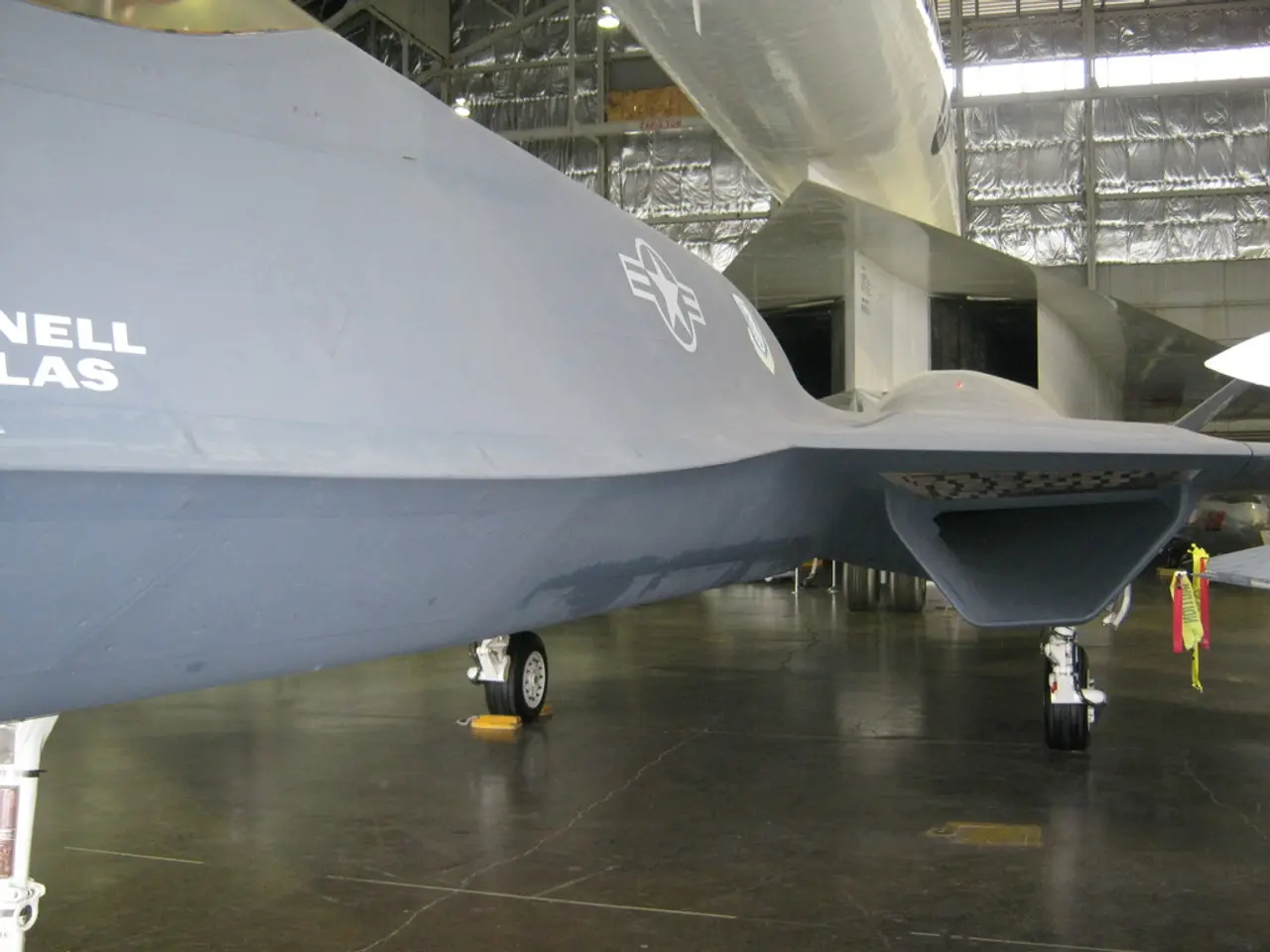Airline Giant Pan American Airways Faces Demise: A Look at an Aviation History Icon
In the annals of aviation history, few names resonate as deeply as Pan American World Airways, commonly known as Pan Am. Established in 1927 as Pan American Airways, this American entrepreneurial venture would go on to become a symbol of the golden age of air travel.
Pan Am's trademark was the second most recognised worldwide in aviation history, a testament to its global reach and influence. The company started as a scheduled airmail and passenger service between Key West, Florida, and Havana, Cuba, and expanded significantly over the years through mergers, acquisitions, and divestitures.
One of Pan Am's earliest milestones was its operation along the east coast of South America through the acquisition of the New York, Rio, and Buenos Aires Line (NYRBA) in 1929. This move marked the beginning of Pan Am's dominance in the region, a dominance that would only grow with time.
Between the late 1950s and early 1970s, Pan Am was world-renowned for its advanced fleet, experienced staff, and numerous facilities. Juan Terry Trippe, an American entrepreneur, played a significant role in the company's expansion, guiding it through a period of unprecedented growth.
Pan Am's route network expanded significantly in the 1930s, particularly in Central and South America, and later included transatlantic and transpacific destinations. The company's fleet of aircraft enabled them to fly with larger numbers of passengers, at a much longer range, and with fewer stops.
In 1945, Pan Am completed the first transatlantic proving flight into Shannon Airport with a DC-4, paving the way for the inaugural scheduled passenger transatlantic crossings a month later. This marked Pan Am's foundational role in establishing transatlantic air travel.
In August 1970, Shannon Airport received its first scheduled jumbo jet, a Pan Am Boeing 747, which carried over 300 passengers. This event underscored Pan Am’s pioneering use of wide-body aircraft in commercial aviation and its role in expanding international air travel capacity.
However, the mid-1970s saw Pan Am facing challenges due to rising competition from the deregulation of the airline industry in 1978. This marked the start of difficult times for the company. Despite attempts at financial restructuring methods, including rebranding, Pan Am's fortunes continued to wane.
In 1988, Pan Am suffered a major tragedy when Flight 103 was destroyed by a terrorist bomb over Lockerbie, Scotland, killing all 259 people on board. This event became one of the most notorious in aviation history and profoundly affected Pan Am’s reputation and operations.
The bankruptcy of Pan Am in 1991 caused many to believe the golden age of air travel had ended. The company sold off its assets piece by piece before declaring bankruptcy on 4 December 1991.
Decades after its peak, Pan Am’s legacy is celebrated through events like "Tracing the Transatlantic" held in 2025, commemorating the 80th anniversary of its first transatlantic passenger flight. This includes recreations of historical routes and honoring Pan Am’s cultural and aviation heritage.
Pan Am was one of the founding members of the International Air Transport Association (IATA), and its hospitality and customer service programs shaped the industry standards used today. The company's primary hub and flagship terminal was the Worldport at John F. Kennedy International Airport in New York City.
In addition to its commercial successes, Pan Am was involved in various covert and humanitarian operations, such as Operation Pedro Pan, a Cold War relocation effort involving U.S. government and Catholic Church collaboration.
These milestones highlight Pan Am’s pioneering contributions to global air travel, its tragic setbacks, and its lasting cultural legacy. Despite its demise, the spirit of Pan Am lives on, a testament to the indomitable human spirit and the transformative power of aviation.
[1] Pan Am Flight 103: Twenty-Five Years Later. (2013, December 20). Retrieved from https://www.history.com/news/pan-am-flight-103-twenty-five-years-later
[2] Pan American World Airways. (n.d.). Retrieved from https://www.britannica.com/topic/Pan-American-World-Airways
[3] Operation Babylift. (n.d.). Retrieved from https://www.history.com/news/operation-babylift-vietnam-war-refugee-children
[4] Operation Pedro Pan. (n.d.). Retrieved from https://www.history.com/news/operation-pedro-pan-cuban-refugee-children-cold-war
Pan Am's influence extended beyond aviation history, as its hospitality and customer service programs also shaped standards in the sports industry, such as the hosting of Pan Am Games in several cities across the globe.
In the realm of sports, Juan Trippe, Pan Am's visionary founder, envisioned air travel as a means to globalize sports events, fostering a spirit of unity and friendly competition.








